Cold Therapy and Emotional Control: Training the Mind Through the Body
Introduction
You’ve probably heard of cold plunges, ice baths, or the viral “Wim Hof Method.” What was once considered extreme has now become a daily ritual for many — athletes, biohackers, and even therapists. But the real magic of cold therapy isn’t just in its physical benefits; it’s in how it transforms the mind. 🧠
Cold therapy — or deliberate cold exposure — is one of the most powerful tools for building emotional control, resilience, and nervous system regulation. By learning to stay calm in the face of discomfort, you train your brain to respond differently to stress.
This article dives deep into how cold exposure affects your body and brain, how it rewires emotional responses, and how you can safely use it to strengthen not only your nervous system but also your emotional balance. 🌊
Looking for supplements for Emotional Control? Click here.
🌬️ What Is Cold Therapy?
Cold therapy (also called cryotherapy or cold exposure training) involves exposing the body to low temperatures for a controlled period of time. The practice can take many forms:
🧊 Ice baths or cold plunges (5–10°C / 40–50°F)
🚿 Cold showers (10–15°C / 50–60°F)
❄️ Whole-body cryotherapy chambers (-100°C to -140°C for 2–4 minutes)
🌬️ Natural exposure — swimming in cold lakes, rivers, or snow
The physiological stress from the cold challenges the body, but also trains it — much like weightlifting for your nervous system.
When done properly, cold therapy can:
Lower inflammation and pain
Improve focus and energy
Regulate mood and stress
Strengthen mental and emotional resilience
But beyond the biohacking hype, it’s the psychological benefits — particularly in emotional control — that make this practice so transformative.
🧠 The Science of Cold and the Nervous System

Your body’s first reaction to cold is primal. The moment cold water touches your skin, your sympathetic nervous system (fight-or-flight) activates. Heart rate spikes, breathing quickens, and adrenaline surges.
But if you stay in the cold — calmly breathing and observing — something amazing happens:
your body learns that discomfort does not equal danger.
Over time, repeated exposure strengthens the autonomic nervous system, which controls heart rate, breathing, and stress responses. This training leads to better emotional regulation in everyday life.
⚡ The Stress Response Loop
Cold exposure mimics the sensations of emotional stress — racing heart, shallow breathing, muscle tension — but in a safe, controlled environment.
Each time you stay calm through the cold, you send a message to your brain:
“I can feel stress and still stay in control.”
This reprograms your HPA axis (hypothalamic-pituitary-adrenal system), the network that governs your stress hormones like cortisol and adrenaline.
In short: Cold teaches your brain how to not panic.
🌊 Cold Therapy and Emotional Control
Emotional control doesn’t mean suppressing emotions — it means responding rather than reacting. Cold exposure is a powerful way to build this skill physically.
Here’s how:
Calm in Chaos
The shock of cold water immediately triggers panic. Your brain screams, “Get out!”
But if you focus on slow breathing and stillness, you learn to separate sensation from reaction.
Each second in the cold strengthens your capacity for composure under stress — the same composure you need during arguments, anxiety, or fear.
💬 “If you can control your breath in an ice bath, you can control your emotions in an argument.” — Wim Hof
Expanding Your Window of Tolerance
Trauma, anxiety, and chronic stress narrow what psychologists call your window of tolerance — the range where your nervous system feels safe. Outside that window, you either shut down (freeze) or overreact (fight-or-flight).
Cold therapy gently expands this window. With each session, your body becomes better at tolerating intense sensations without panic.
This translates into life situations like:
Staying calm during emotional conversations 💬
Thinking clearly under pressure 🧘
Reducing reactivity in stressful environments
It’s emotional resilience, built one shiver at a time. ❄️
Strengthening the Mind–Body Connection
Cold exposure demands presence. You can’t think about tomorrow’s to-do list while submerged in icy water — your body pulls you into the now.
That physical mindfulness creates emotional grounding.
When you focus on the rhythm of your breath, you train the brain to stay anchored — a skill that directly enhances emotional control.
Boosting Mood and Mental Clarity
After cold exposure, many people describe feeling euphoric, peaceful, or deeply clear-headed. This isn’t placebo — it’s neurochemistry.
Cold triggers the release of:
Dopamine (motivation, focus)
Norepinephrine (alertness, clarity)
Endorphins (natural pain relief and well-being)
This chemical cascade elevates mood, sharpens focus, and reduces anxiety — creating a stable foundation for emotional regulation.
🧘 The Breath–Cold Connection
The most important skill in cold exposure is breathing.
When you first step into cold water, your instinct is to gasp. This hyperventilation mirrors what happens during anxiety or panic attacks. The key is to use conscious breathing to override that reflex.
🌬️ Example Technique (Wim Hof–Style Breathing + Cold):
Prepare: 30 deep, rhythmic breaths (in through the nose, out through the mouth).
Exhale fully and hold your breath.
Stay calm: Focus on stillness and relaxation.
Enter cold water: Continue slow nasal breathing (inhale 4 seconds, exhale 6).
The breath becomes your anchor — a signal to your brain that you’re in control.
Over time, your breathing patterns change even outside the ice bath: slower, calmer, more regulated — leading to better emotional stability throughout your day.
💞 Emotional Benefits Beyond the Science
Cold therapy often triggers deep emotional release. People cry, laugh, or feel waves of peace after emerging from the cold.
Why? Because the nervous system holds emotional memory.
When cold resets the body’s stress circuits, suppressed emotions can surface safely. It’s like defrosting emotional numbness — allowing healing to begin.
🌧️ The “Emotional Reset” Effect
After consistent cold exposure, you may notice:
Less anxiety and overthinking
More grounded presence
Stronger emotional awareness
Reduced sensitivity to daily stressors
You’re literally reconditioning your nervous system to feel without being flooded.
Cold doesn’t just make your body stronger — it makes your mind steadier. 🪷
💪 Physiological Adaptations: What Happens Inside the Body
When you expose yourself to cold regularly, your body learns to adapt:
🔥 Improved Circulation
Blood vessels constrict in the cold, then open again after you exit — improving vascular elasticity and oxygen flow.
🩸 Better Hormonal Balance
Cold lowers cortisol (stress hormone) while increasing norepinephrine, which enhances alertness and focus without anxiety.
🧠 Enhanced Neuroplasticity
Repeated cold exposure trains the brain to adapt quickly — strengthening the neural pathways for calmness, resilience, and control.
🦠 Immune System Boost
Studies show increased white blood cell count and improved immune response with regular cold exposure.
💧 Improved Sleep and Recovery
Cold therapy reduces inflammation and resets circadian rhythms, leading to deeper rest — essential for emotional regulation.
🌍 Cold Therapy and the Vagus Nerve
One of the key mechanisms behind emotional control is vagal tone — the strength of the vagus nerve, which connects your brain to your organs.
Cold water activates this nerve, especially around the face and neck. This signals the parasympathetic system (rest-and-digest) to engage — slowing heart rate, deepening breath, and inducing calm.
Think of it as a reset button for your stress response.
The stronger your vagus nerve, the easier it becomes to return to balance after emotional distress. Cold exposure literally tones this system like a muscle — improving your capacity for calm under chaos. 🧊
🧘 Integrating Cold Therapy with Mental Health Practices
To maximize emotional benefits, cold therapy works best when combined with other grounding techniques:
Breathwork Before and After Cold Exposure
Pre-cold: Inhale calm, exhale tension.
Post-cold: Deep recovery breathing to anchor safety.
Meditation or Visualization
Focus on surrendering rather than resisting. Imagine warmth spreading from your heart as you enter the cold — reframing discomfort as energy.
Journaling After Sessions
Write down emotions or thoughts that surface. The cold often reveals subconscious patterns — journaling integrates them consciously.
Affirmations for Emotional Mastery
Repeat mantras like:
“I can find peace in discomfort.”
“My mind controls my body.”
“Calm is my strength.”
These affirmations reinforce your nervous system’s new programming.
Want to try Breathwork? Click Here.
🧊 Step-by-Step Guide: Building Emotional Control Through Cold
Start gradually — emotional strength develops through consistency, not intensity.
Week 1: Cold Showers
End your shower with 15–30 seconds of cold.
Focus on slow, steady breathing.
Week 2–3: Longer Exposure
Work up to 1–2 minutes.
Stay relaxed; focus on exhalation to calm the body.
Week 4+: Cold Plunge or Ice Bath
Start at 10°C (50°F) for 2 minutes.
Breathe through the urge to flee.
Notice how your mind reacts — then choose calm.
Goal: 2–4 cold exposures per week, 2–3 minutes each.
Remember: emotional control is trained, not inherited. Each immersion strengthens the mind–body bridge.
⚠️ Safety First
While cold exposure is powerful, it must be done safely.
Avoid or consult your doctor if you have:
Cardiovascular disease
Hypertension
Raynaud’s syndrome
Neurological conditions
Never:
Jump into ice water unprepared or alone
Mix alcohol or drugs with cold therapy
Push through numbness or dizziness
Your goal isn’t to prove toughness — it’s to build balance.
💡 Cold Therapy and Depression: Reawakening Energy

Studies show cold exposure can help alleviate depressive symptoms by stimulating neurotransmitters like norepinephrine and dopamine.
Cold water immersion increases norepinephrine up to 300%, improving alertness and mood.
When paired with mindful breathing and sunlight exposure, cold therapy becomes a natural antidepressant — awakening vitality and presence. ☀️
Looking for online therapy ? Click Here.
🔄 Rewiring Emotional Patterns
Emotional habits — like reacting with anger, fear, or anxiety — are learned responses. Cold exposure interrupts those automatic reactions and teaches the body a new one: calm awareness.
Each time you resist the urge to escape the cold, you train your prefrontal cortex (rational mind) to override the amygdala (emotional alarm center).
That skill carries over into real life — making you less reactive, more intentional, and emotionally grounded.
🧠 Cold exposure is emotional strength training.
🧘 The Deeper Layer: Surrender vs. Control
Ironically, cold therapy teaches emotional control through surrender.
You can’t “fight” the cold. The more you tense up, the worse it feels. The only way to find peace is to let go — to breathe, to accept.
That surrender is the same principle behind emotional mastery: allowing feelings to exist without being consumed by them.
🪷 You don’t control the cold — you control your reaction.
🌅 Integrating Cold into Daily Life
Cold therapy is more than a routine; it’s a mindset. Use it as a metaphor for emotional regulation in daily challenges.
☕ Morning Routine
Start your day with a cold shower. Feel discomfort, then breathe through it. This sets the tone for calm focus all day.
💼 During Stressful Moments
When anger or anxiety arises, take three slow breaths — remember the ice bath. You’ve trained for this.
🌙 Evening Recovery
End your day with a contrast shower (hot → cold → warm). It balances the nervous system and improves sleep.
Each exposure becomes a reminder:
“I am stronger than my impulses.”
🌿 Supplements That Support Cold Therapy and Emotional Stability
While not essential, certain nutrients can enhance the benefits of cold exposure by supporting neurotransmitters and stress recovery.
| Goal | Helpful Supplements | Function |
|---|---|---|
| Reduce Inflammation | Omega-3s, Curcumin | Lower cytokine activity |
| Calm the Nervous System | Magnesium Glycinate, L-Theanine | Support parasympathetic tone |
| Boost Mood | Rhodiola, B Vitamins, SAM-e | Regulate dopamine and serotonin |
| Improve Focus | Tyrosine, Ginseng | Support norepinephrine production |
🧘 Combine supplementation with breathwork, hydration, and balanced nutrition for a holistic emotional control protocol.
🧠 Cold Therapy, Resilience, and the Modern Nervous System
In a world of overstimulation — constant noise, screens, and social stress — our nervous systems rarely experience true contrast. Cold therapy reintroduces that contrast.
It’s a reset mechanism for the human body.
The cold strips away comfort, ego, and distraction. All that remains is breath, presence, and awareness.
From that space, emotional control isn’t just a concept — it becomes embodied wisdom.
❄️ “Through the cold, we find warmth within.”
🌈 The Emotional Transformation
After weeks of consistent practice, you may notice:
Less anxiety and irritability
Greater focus and self-discipline
Faster recovery from emotional or physical stress
A quiet sense of inner strength
The same nervous system that once overreacted begins to self-regulate. You stop fearing discomfort — and start seeing it as a teacher.
💬 Real-Life Example
Consider Sarah, a 36-year-old entrepreneur who began daily cold showers to manage burnout. At first, she could barely last 20 seconds. Her breath was frantic, her body in shock.
But over a month, she learned to breathe slower. She noticed the same calm she found in the shower appearing during business crises and emotional arguments.
What changed?
Not her circumstances — her nervous system.
Cold exposure taught her how to stay calm in any storm.
🌊 Final Thoughts: The Ice as a Mirror
Cold therapy isn’t about testing your limits — it’s about discovering them. It reveals your unconscious reactions, your fears, your patterns.
When you meet the cold with calm, you’re not just conquering discomfort — you’re learning emotional mastery.
Each breath in the ice is a lesson: that you can feel intensity without losing composure, and that peace isn’t found in avoiding stress, but in embracing it mindfully.
So when life feels overwhelming, remember — step into the cold.
Let your body teach your mind that discomfort can coexist with control. ❄️💙
📚 References
Kox, M., et al. (2014). Voluntary activation of the sympathetic nervous system and attenuation of the innate immune response in humans. PNAS, 111(20), 7379–7384.
Huttunen, P., et al. (2004). Cardiovascular and hormonal responses to cold exposure in winter swimmers. Journal of Thermal Biology.
van Marken Lichtenbelt, W. D., et al. (2009). Cold-activated brown adipose tissue in healthy men. NEJM.
Shevchuk, N. A. (2008). Adapted cold shower as a potential treatment for depression. Medical Hypotheses, 70(5), 995–1001.
Hof, W., & Rosales, J. (2017). The Wim Hof Method: Activate Your Full Human Potential.
McEwen, B. S. (2007). Physiology and neurobiology of stress and adaptation. Physiological Reviews.
Budde, H., et al. (2010). The mood-enhancing benefits of exercise and cold exposure. Journal of Behavioral Medicine.
Tracy, L. M., et al. (2018). Vagal control of emotion regulation: Evidence from heart rate variability. Neuroscience & Biobehavioral Reviews.
Tipton, M. J., & Bradford, C. (2014). Thermophysiological responses to immersion in cold water and cold air. Physiology & Behavior.
Related Posts
-
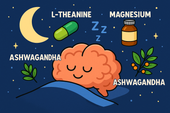
Nootropics That Promote Calm and Rest
Explore the world of calming nootropics — natural brain enhancers that promote relaxation, better focus, and deeper rest. Learn how L-Theanine, magnesium, ashwagandha, and other adaptogens help balance your nervous system, reduce stress, and support restorative sleep.
-
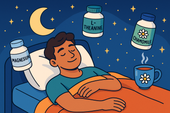
Best Natural Supplement Stack for Sleep
Discover the best natural supplement stack for deep, restorative sleep. Learn how nutrients like magnesium, L-theanine, glycine, and calming herbs such as chamomile and ashwagandha work together to relax your body, calm your mind, and improve sleep quality—naturally and safely.
-
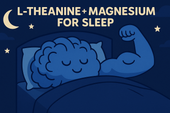
Combining L-Theanine and Magnesium for Sleep: A Calm Night, Naturally
Discover how combining L-Theanine and Magnesium can help you drift into deep, restorative sleep. Learn how this natural duo calms the mind, relaxes the body, and supports your nervous system—without grogginess the next morning.
-
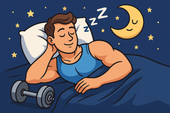
How to Sleep Better After Intense Workouts
Struggling to fall asleep after a tough workout? Learn how to optimize your post-training recovery with nutrition, hydration, and science-backed sleep strategies. Discover how to calm your nervous system, balance hormones, and wake up fully recharged for your next session.
-

Ashwagandha and Valerian: A Bedtime Combo for Deep Rest and Emotional Reset
Discover the calming synergy of Ashwagandha and Valerian root, two natural sleep aids that help quiet the mind, ease anxiety, and promote deeper rest. Learn how this herbal duo supports the nervous system, balances stress hormones, and restores emotional peace — without next-day grogginess.
-
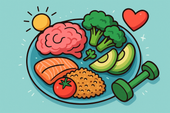
How to Create a Resilience-Boosting Diet
Discover how to build emotional and physical strength from the inside out with a resilience-boosting diet 🍎. Learn which foods stabilize your mood, how supplements like magnesium and omega-3s strengthen your stress response, and why pairing nutrition with breathwork and therapy creates lasting calm, focus, and vitality 🌿💪.
-
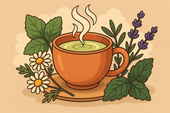
Best Teas and Herbal Blends for Calmness: Nature’s Way to Restore Inner Peace
Ashwagandha, the ancient adaptogenic herb, helps your body find balance during stress. Known as “Indian ginseng,” it supports cortisol regulation, boosts energy, and restores calm clarity. Discover how this powerful root promotes resilience, emotional balance, and steady vitality — one cup at a time. 🌸
-

Parenting and Emotional Strength: How to Raise Children Without Losing Yourself
Empathy is the bridge that connects hearts — the quiet power to understand, feel, and support another’s emotions without judgment. Learn how empathy strengthens relationships, enhances communication, and cultivates deeper compassion in everyday life. 🌿
-
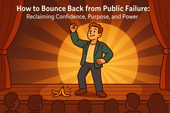
How to Bounce Back from Public Failure: Reclaiming Confidence, Purpose, and Power
Visualization is more than imagination — it’s brain training for resilience. By picturing calm, success, or healing, you activate the same neural pathways as real experience. Learn how daily visualization rewires your brain for confidence, emotional balance, and recovery from stress. ✨
-

Coping with Financial Stress Through Resilience: How to Stay Grounded When Money Feels Tight
Body awareness is the foundation of emotional resilience. By tuning into your body’s signals — tension, fatigue, or calm — you learn to recognize stress before it overwhelms you. Discover how mindfulness, gentle movement, and breathwork can deepen your connection with your body and restore balance from the inside out. 🧘
-

How to Stay Positive During Chronic Illness: A Guide to Emotional Strength and Hope
Creativity is more than art — it’s a form of healing. Whether through painting, writing, music, or small acts of expression, creativity helps release emotion, calm the nervous system, and reconnect you to joy. Discover how to use creativity as a tool for emotional balance, resilience, and self-discovery. 🌿
-
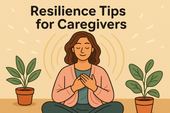
Resilience Tips for Caregivers: How to Stay Strong While Caring for Others
Joy isn’t the absence of pain — it’s the quiet strength to find light even in challenging times. Cultivating joy through small daily moments restores balance, releases stress, and reminds you of life’s beauty. Learn how to reconnect with authentic happiness, rebuild emotional energy, and nurture your nervous system through gratitude, presence, and play. 🌿
-
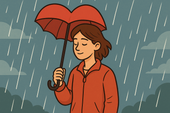
Building Resilience After a Breakup: How to Heal, Rebuild, and Rise Stronger
Social connection is one of the strongest predictors of emotional resilience. During difficult times, genuine relationships act as anchors — calming the nervous system, reducing stress hormones, and helping you regain perspective. Learn how cultivating real human connection can strengthen your mind, heart, and overall well-being. 🌿
-
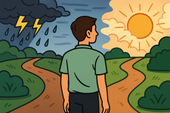
How to Stay Emotionally Strong During Job Loss
Your emotions are powered by brain chemistry — a delicate balance of neurotransmitters like serotonin, dopamine, and cortisol. When these chemicals work in harmony, you feel calm, focused, and resilient. Learn how daily habits, nutrition, and mindfulness can support your brain chemistry and boost emotional well-being naturally. 🌿
-
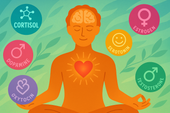
The Role of Hormones in Emotional Stability: How Your Chemistry Shapes Your Calm
Hormones shape more than your body — they shape your emotions, resilience, and sense of calm. From cortisol to serotonin, these chemical messengers influence how you react to stress, connect with others, and recover from challenges. Learn how to balance your hormones naturally to build lasting emotional stability and harmony within. 💫
-
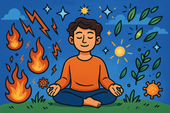
Mitochondria and Emotional Energy: The Cellular Power Behind Your Mood
Breathwork is one of the most powerful tools for emotional regulation and cellular balance. Through intentional breathing, you can calm your nervous system, increase oxygen flow to the brain, and even support mitochondrial energy. Learn how conscious breathing connects body and mind — transforming stress into presence and emotional strength. 🌿
-
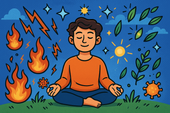
Inflammation and Its Impact on Mood Resilience: The Silent Link Between Body and Mind
Inflammation doesn’t just affect the body — it impacts the mind. Chronic inflammation alters brain chemistry, depletes serotonin, and makes emotional recovery harder. Learn how calming inflammation through nutrition, mindfulness, and sleep can restore balance, resilience, and a renewed sense of emotional strength. 💫
-
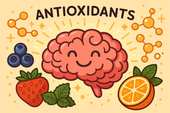
How Antioxidants Protect Emotional Well-being: The Hidden Link Between Oxidative Stress and Mental Health
Antioxidants do more than protect your body — they defend your mind. By neutralizing oxidative stress, antioxidants support serotonin, dopamine, and brain energy pathways that keep you calm, focused, and emotionally balanced. Discover how foods like berries, green tea, and dark chocolate nourish your brain, boost mood, and strengthen resilience from the inside out. 🌿✨
-
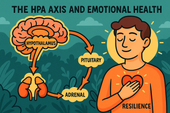
The HPA Axis and Emotional Health: The Hidden Bridge Between Stress and Mind
Neuroplasticity — the brain’s ability to rewire and adapt — is the foundation of emotional healing and resilience. When you face stress, trauma, or change, your neural pathways can reshape themselves to support new patterns of calm, focus, and self-awareness. Learn how daily practices like mindfulness, therapy, and breathwork strengthen neuroplasticity to transform emotional pain into personal growth. 🌸
-
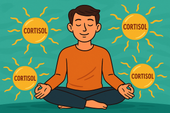
Why Cortisol Control Is Key to Resilience: Mastering Stress to Build Emotional Strength
Controlling cortisol — the body’s main stress hormone — is the secret to lasting resilience. When cortisol levels stay balanced, your mind becomes clearer, emotions steadier, and energy more sustainable. Learn how breathwork, mindset shifts, adaptogens, and daily rhythms can help you calm your stress response and build true inner strength. 🌞💪
-
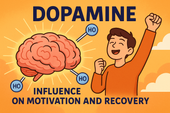
Dopamine’s Influence on Motivation and Recovery: Reigniting Drive and Balance
Healthy relationships are the foundation of emotional balance and resilience. Whether romantic, familial, or platonic, genuine connection releases dopamine, serotonin, and oxytocin — the brain’s “bonding trio” — helping us feel secure, motivated, and seen. Learn how trust, empathy, and communication not only strengthen your connections but also reshape your nervous system for deeper emotional well-being. 🌿🤝
-
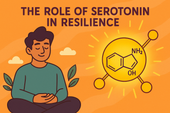
The Role of Serotonin in Resilience: How This “Mood Molecule” Shapes Emotional Strength
Serotonin — often called the “resilience molecule” — plays a vital role in how we handle stress, regulate mood, and recover from emotional challenges. Beyond happiness, this powerful neurotransmitter helps balance the gut-brain axis, stabilize the nervous system, and support emotional flexibility. Learn how nutrition, sunlight, mindfulness, and adaptogens can naturally boost serotonin and strengthen your emotional resilience. 🌞🧠
-
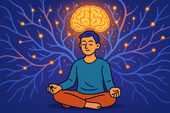
How Neuroplasticity Supports Emotional Growth: Rewiring the Brain for Resilience
Neuroplasticity is the brain’s built-in power to grow, adapt, and heal — and it’s the foundation of emotional transformation. Every mindful breath, compassionate act, or reframed thought strengthens new neural pathways that support resilience and self-awareness. Learn how your brain rewires through daily habits, helping you turn emotional challenges into opportunities for growth and calm. 🌿
-
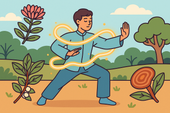
Tai Chi and Adaptogens for Mind-Body Balance: The Art of Harmonizing Energy and Resilience
Alchemy isn’t just an ancient science — it’s a timeless symbol of transformation and inner balance. By blending the physical and spiritual, alchemy teaches us that change begins from within. Just as metals are refined into gold, we too can transmute emotional pain, stress, and chaos into clarity and strength through mindful practice and self-awareness. 🌙✨
-
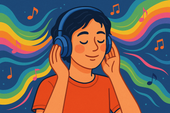
How Music Influences Emotional Recovery: The Healing Soundtrack of the Mind
Neuroplasticity — the brain’s ability to rewire and heal itself — is at the heart of emotional recovery. Through mindful habits, music, therapy, and consistent mental stimulation, your brain can form new connections that support resilience and well-being. Discover how neuroplasticity turns pain into growth, helping you rebuild balance, focus, and emotional strength. 🌿
-
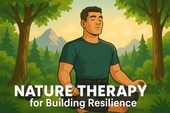
Nature Therapy for Building Resilience: Reconnecting With the Healing Power of the Earth
Nature therapy helps rebuild emotional resilience by reconnecting you with the healing rhythms of the Earth. From forest walks to sunlight exposure, nature restores balance to your nervous system, lowers stress hormones, and teaches emotional adaptability. Learn how spending time outdoors can enhance mental clarity, calm anxiety, and awaken your natural capacity to heal. 🌞
-
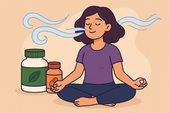
Breathwork Techniques That Pair with Supplements: The Ultimate Synergy for Stress Relief and Mental Clarity
Breathwork and supplements create a powerful mind-body synergy for stress relief, focus, and energy. By combining intentional breathing with adaptogens, nootropics, and calming nutrients, you can naturally regulate cortisol, sharpen mental clarity, and boost emotional balance. This guide explores the best breathwork techniques and supplement pairings to help you feel centered, calm, and energized from the inside out. 🌿
-
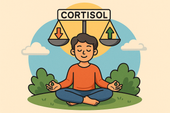
Why Cortisol Balance Matters for Emotional Strength
Balancing cortisol — your body’s main stress hormone — is essential for emotional resilience. When cortisol is chronically high, your mind stays stuck in survival mode, leading to fatigue, anxiety, and emotional instability. This article explores how nutrition, supplements, breathwork, and therapy can help restore healthy cortisol rhythms, regulate the nervous system, and strengthen your ability to handle life’s challenges with calm focus and emotional strength. 🌿
-
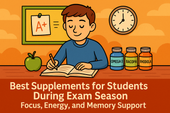
Best Supplements for Students During Exam Season: Focus, Energy, and Memory Support
Studying late into the night? Learn which natural supplements can boost focus, memory, and mental stamina during exam season — without the crash. From omega-3s to Bacopa and Rhodiola, discover your brain’s ultimate exam support stack. 🎓🧠
-
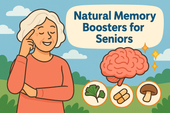
Natural Memory Boosters for Seniors: How to Keep Your Mind Sharp and Focused
Stay mentally sharp and confident as you age. Discover science-backed natural supplements and lifestyle habits that boost memory, focus, and brain longevity for seniors. 🌿🧠
-
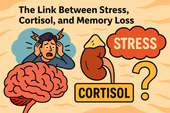
The Link Between Stress, Cortisol, and Memory Loss
Chronic stress can quietly erode your memory — and cortisol is the key culprit. Learn how stress hormones affect the brain, why the hippocampus shrinks under pressure, and how natural strategies can help you restore memory and mental clarity. 🧠✨
-
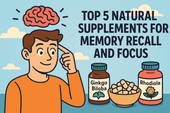
How to Build a Daily Supplement Routine for Memory Health
Want to sharpen your memory and stay mentally clear? Learn how to build a daily supplement routine for memory health — from morning focus to nighttime brain repair. Discover science-backed nutrients that boost recall, focus, and long-term cognitive resilience. 🧠🌿
-
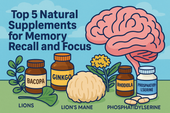
Top 5 Natural Supplements for Memory Recall and Focus
Looking to boost memory and concentration naturally? Discover the top 5 supplements — Bacopa, Ginkgo Biloba, Lion’s Mane, Rhodiola, and Phosphatidylserine — that enhance focus, recall, and long-term brain health. 🧠✨
-
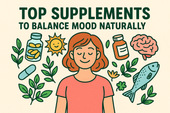
Top Supplements to Balance Mood Naturally
From omega-3s to adaptogens, discover the top natural supplements proven to support emotional balance, reduce stress, and promote inner calm — safely and effectively. 🌿✨
-
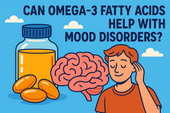
Can Omega-3 Fatty Acids Help with Mood Disorders?
Omega-3 fatty acids do more than support heart health — they can help balance mood, reduce depression, and calm anxiety. Discover how EPA and DHA nourish your brain, fight inflammation, and support emotional well-being from within. 🌊🧠
-

Vitamin D and Mood: The Sunshine Vitamin for Emotional Balance
Could the key to emotional balance be as simple as a little sunlight? Discover how vitamin D — the sunshine vitamin — influences serotonin, reduces inflammation, and helps you feel more positive and resilient year-round. ☀️💛
-

The Role of Magnesium in Reducing Irritability and Low Mood
Feeling on edge or emotionally drained? Magnesium could be the missing link between your body and your mood. Discover how this essential mineral reduces irritability, balances neurotransmitters, and helps your nervous system find calm again. 🌿✨
-
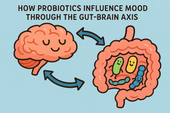
How Probiotics Influence Mood Through the Gut-Brain Axis
Discover how probiotics can do more than support your digestion—they can actually uplift your mood. This article explores the fascinating gut-brain axis and how balancing your gut bacteria through probiotics may help reduce anxiety, improve emotional stability, and support long-term mental well-being. 🌿🧠
-
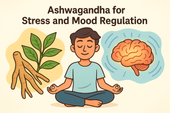
Ashwagandha for Stress and Mood Regulation
Discover how Ashwagandha, the powerful adaptogenic herb 🌿, helps your body manage stress and regulate mood. Learn how it balances cortisol, boosts GABA and serotonin, and supports emotional stability — helping you feel calm, focused, and resilient every day.
-
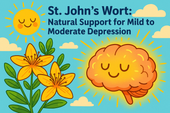
St. John’s Wort: Natural Support for Mild to Moderate Depression
Discover how St. John’s Wort, the “sunshine herb” 🌼, naturally supports mild to moderate depression. Learn how it boosts serotonin, balances mood, and promotes emotional resilience — with research showing its effectiveness compares to antidepressants, but with fewer side effects.
-
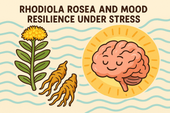
Rhodiola Rosea and Mood Resilience Under Stress
Discover how Rhodiola rosea helps your body adapt to stress 🌿. Learn how this powerful adaptogen balances cortisol, supports serotonin and dopamine, and strengthens emotional resilience — helping you stay calm, focused, and energized under pressure.
-

Chamomile and Lavender: Herbal Calm for Emotional Fluctuations
Discover how chamomile and lavender bring calm to emotional ups and downs 🌿. Learn how these two soothing herbs balance your nervous system, ease anxiety, and support restful sleep — naturally helping you find peace and emotional stability.
-
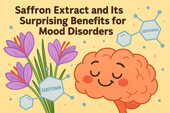
Saffron Extract and Its Surprising Benefits for Mood Disorders
Discover how saffron extract — the golden spice of joy 🌸 — can naturally support mood balance, ease anxiety, and lift mild depression. Learn what science says about its serotonin-boosting power, the ideal dosage, and how this ancient remedy compares to modern antidepressants.
-
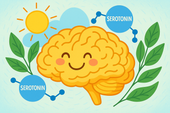
5-HTP and Serotonin: A Natural Path to Lifting Mood
Discover how 5-HTP naturally boosts serotonin 🌞 — the neurotransmitter behind mood, sleep, and emotional balance. Learn how this plant-derived compound supports happiness, reduces anxiety, and improves rest by helping your brain create more serotonin the gentle, natural way.
-
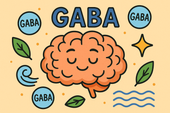
GABA Supplements for Reducing Anxiety and Mood Swings
Discover how GABA supplements can help reduce anxiety and balance mood naturally 🌿. Learn how this calming neurotransmitter works to quiet the mind, ease stress, and improve sleep — plus which nutrients and habits can boost your body’s own GABA production for long-term emotional stability.
-
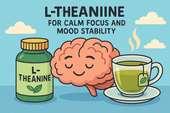
L-Theanine for Calm Focus and Mood Stability
Discover how L-theanine, the calming compound found in green tea 🍵, promotes focus, relaxation, and mood stability. Learn the science behind how it balances neurotransmitters, reduces stress hormones, and enhances clarity — helping you stay centered, calm, and productive without sedation.
-
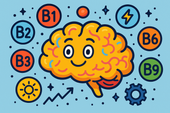
B Vitamins and Brain Chemistry: Supporting Energy and Emotional Balance
Discover how B vitamins power your brain chemistry ⚡. Learn how B6, B9, and B12 support serotonin, dopamine, and energy production — helping boost focus, mood, and emotional balance. From diet to supplements, explore how this vital nutrient group keeps your mind resilient and your energy steady.
-

N-Acetyl Cysteine (NAC) and Mood Disorders: What the Research Says
Learn how N-Acetyl Cysteine (NAC) supports brain health and mood balance 🧠. Discover how this antioxidant helps reduce oxidative stress, regulate glutamate, and improve emotional stability in depression, bipolar disorder, and anxiety — backed by cutting-edge psychiatric research.
-

Supplements for Bipolar Disorder: What May Support Stability
Discover the best supplements for bipolar disorder 🌿 that may support emotional stability and brain health. Learn how nutrients like omega-3s, magnesium, vitamin D, and NAC can help reduce inflammation, balance neurotransmitters, and complement traditional treatment safely.

















































